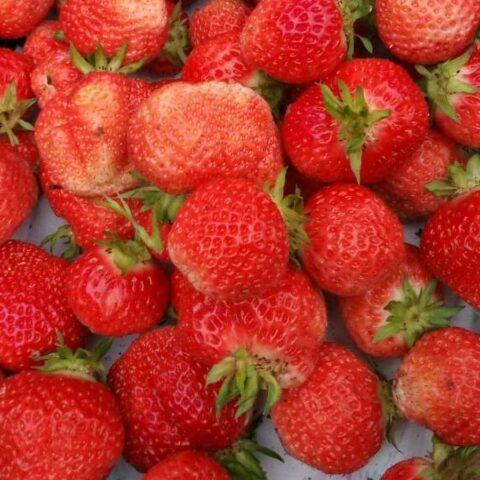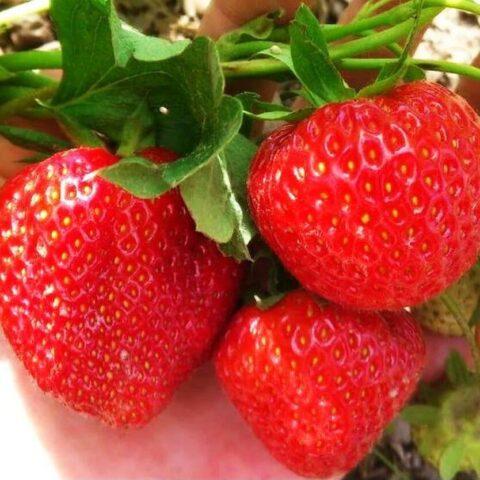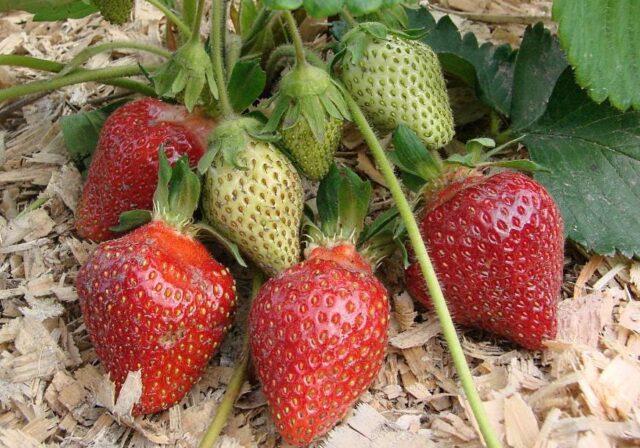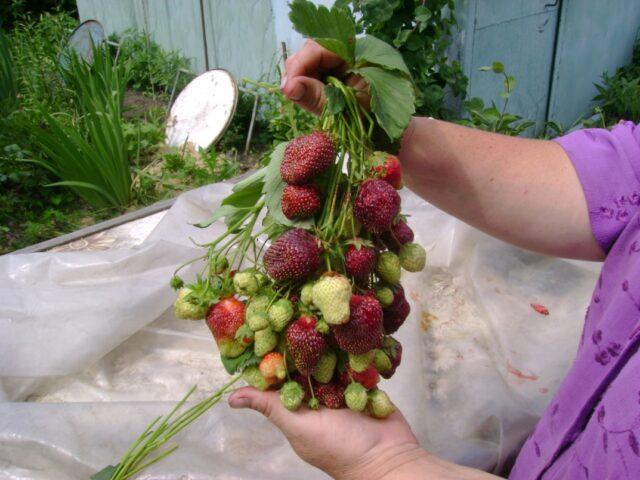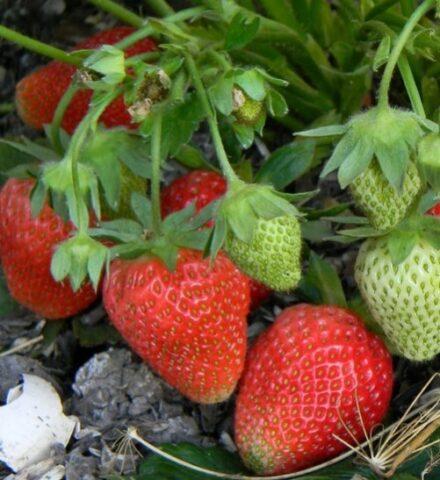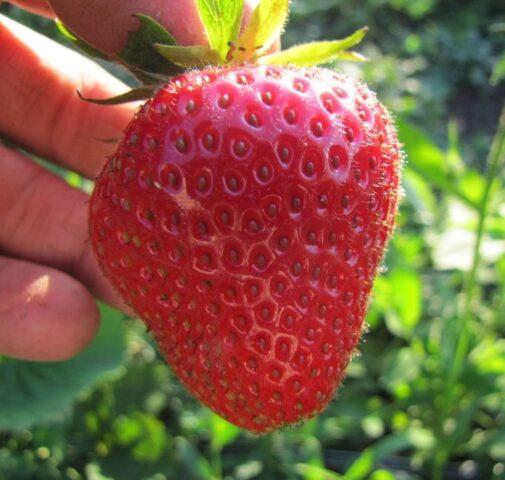Content
Strawberry gardeners are often faced with chlorosis - yellowing or lightening of the leaves. The disease is not dangerous, but it can worsen the quality of berries and reduce the yield. For a fruitful fight, it is necessary to determine the causes and treatment of strawberry chlorosis, depending on its type.

Chlorosis can be caused by a hereditary factor.
What does chlorosis of strawberry leaves look like?
The main symptom of chlorosis is the yellowish tint of the foliage. On closer examination of plants, in addition to him, other symptoms of the disease are found:
- Gradual shredding of sheet plates.
- Curling their edges.
- Drying of the tops of the shoots.
- Falling foliage and inflorescences.
- Rotting and further death of the root system.
In viral chlorosis, it can be seen that internodes are shortened in plants. The main reason for such changes is the cessation of the formation of chlorophyll as a result of a decrease in the process of photosynthesis.

Spraying treatment should be carried out in cloudy weather.
Types of chlorosis of strawberry leaves
Depending on the cause of the disease, chlorosis is divided into two types - infectious and non-infectious. The first is caused by viruses, microorganisms and fungi. Their carriers are pests living on the site. The reasons for the appearance of non-infectious chlorosis are a violation of agricultural technology for growing strawberries, a lack of nutrients and macronutrients in the soil, difficult weather conditions, waterlogged soil, lack of drainage and mechanical damage to the roots.
Depending on the deficiency of which element the strawberry feels, non-infectious chlorosis is divided into several groups:
- Iron is the most common type, the veins of young foliage remain green, and the space between them is yellow or white.
- Magnesium - often found on sandy soils, yellowing is first seen at the edges of old leaves, and later captures the rest of them, the color can be red or orange.
- Sulfuric - first affects the veins of young foliage, and then the rest turns yellow.
- Nitrogenous - the disease is common on acidic soils, veins turn white on the lower leaf plates, then areas adjacent to them, and later - the entire leaf.
- Zinc - arises from an excess of nitrogen, red, yellow, orange specks appear.
To determine the treatment, it is necessary to find the reasons and diagnose.
Causes of chlorosis in strawberries
Lightening of leaves on strawberries can occur not only due to elementose (lack of macronutrients in the soil), but also for other reasons:
- Increased humidity due to frequent and prolonged rains, leading to a drop in the concentration of nutrients in the soil.
- Fluctuations and a sharp drop in air and soil temperature, as a result of which the roots reduce the absorption of nutrients, and the growth of the bush slows down.
- Decreased photosynthesis due to poor lighting, shading of strawberries.
- An excess of nitrogen in the soil ends with a deficiency of potassium and phosphorus in it.
- Increase in nitrogen content after applying large amounts of manure and compost.
- High acidity of the soil.
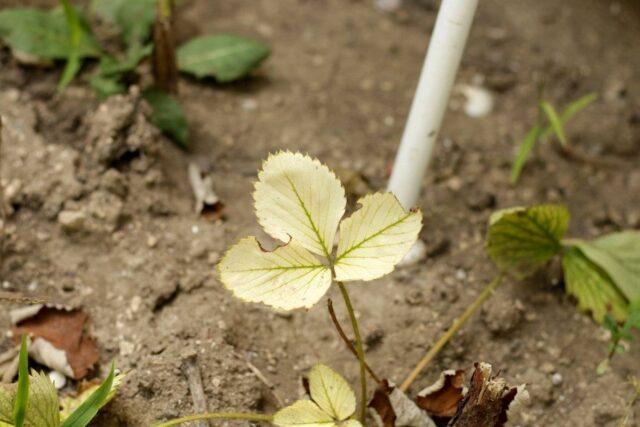
In addition to strawberries, raspberries, currants, apple trees and vegetables are susceptible to chlorosis.
What will happen if the disease is not treated
Chlorosis does not end with simple yellowing of the foliage.Plants can be lost without proper treatment. This happens after the course of the disease is started. The complete death of strawberries is rare, but without treatment, the yield drops, the immunity of berry bushes decreases, they often get sick, become extremely susceptible to pests.
Insect-borne infectious chlorosis is rare. His treatment is completely pointless. To prevent the infection from spreading to other plants, they should be dug up and burned. The soil is disinfected with "Fitosporin", bleach or copper preparations.
How to treat strawberry chlorosis
For the treatment of strawberry chlorosis, a disease related to a non-infectious type, ready-made preparations are used or formulations are created on their own. Having understood the cause of the pathology, the top dressing is selected so as to make up for the lack of an element missing in the soil.
Magnesium chlorosis is eliminated with dolomite flour, potassium magnesium, magnesium sulfate, using them according to the instructions. From folk remedies, wood ash is used as a treatment.
The lack of sulfur is replenished with fertilizers - Azophos and Diammophos. If the cause of chlorosis is a lack of nitrogen, ammonium sulfate or ammonium nitrate will come in handy, which must be handled carefully, avoiding overheating.
If fertilizers are used thoughtlessly, without observing the rules of application and dosage, the plants begin to ache from an overabundance of minerals.
When it is not known which macroelement shortage caused chlorosis, complex mineral fertilizers are used for treatment:
- Bio Master.
- Solution.
- Aquarin.
- Station wagon.
- Kemira Lux.
Treatment with chemicals during chlorosis on strawberry leaves can replace a decoction of onion peel mixed with an infusion of wood ash and water left after washing cereals, rich in useful substances. The mixture can be watered and sprayed on strawberries. By monitoring how the plants respond to feeding, it is determined whether the treatment has been carried out correctly. Greenish young foliage is a sign that the cause has been found, the disease has receded.

The alkaline environment in the soil is often the cause of chlorosis.
Treatment of chlorosis of strawberries with iron vitriol
It is difficult to determine which type of chlorosis has affected strawberries without conducting special laboratory tests. Most often, foliage turns yellow due to a lack of iron. They brighten evenly, and the veins remain bright green. Symptoms of strawberry chlorosis (photo) and treatment depend on the degree of damage. First, the upper leaves turn white, and then the main ones. In order to get rid of the pathology, fertilizer ("Ferovit") is applied under the roots and foliage is sprayed with a solution of ferrous sulfate. There is a popular method for determining chlorosis. A cotton swab is dipped in the prepared liquid and any sign is drawn on a yellow sheet. If the iron shortage assumption is correct, the lettering will turn bright green.

The disease starts from the tops of the foliage.
Having decided on the diagnosis and the cause, treatment begins:
- Acidified water is used for irrigation.
- Iron is added to the diet of strawberries, sprinkling foliage with it.
The macronutrient must be in a chelated form - quickly absorbed by the aboveground and underground parts of berry bushes. It is easy to create it at home from iron sulfate:
- In 1 liter of boiled water dissolve ½ tsp. citric acid.
- Add 2.5 g of ferrous sulfate to the solution.
- Use it for watering and spraying foliage.
There is another way to make iron chelate for treatment:
- Iron sulfate (10 g) is diluted in 1 liter of water.
- Ascorbic acid (20 g) is added to the solution.
- Plants sick with chlorosis are sprayed with it.
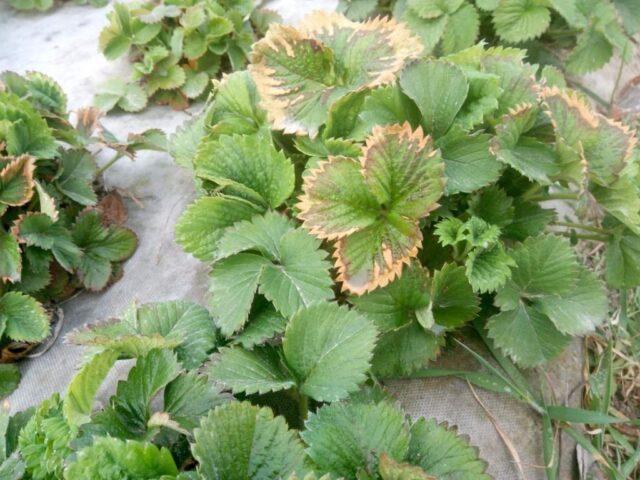
Calcium chlorosis can cause flowers, buds and ovaries to fall off.
Prophylaxis
In order to prevent yellowing of the strawberry foliage on the site, preventive measures are taken in advance and monitor the condition and health of the plants.
Infectious chlorosis most often affects them at the time of planting. To avoid the disease, the soil is disinfected by treating it with biofungicides. The procedure can be replaced by sowing siderates, which cleanse the soil from pathogenic fungi and pests, improve its structure without the use of chemicals. When working in the garden, the instrument must be kept clean and, after use on diseased plants, disinfected. To prevent the affected foliage and plants from causing chlorosis, they are removed from the site and burned. Strawberry planting material is treated with a solution of potassium permanganate.
Non-infectious chlorosis does not pose a big threat, its treatment and prevention is not difficult. If it is known which specific element is lacking in the plant, its deficiency is replenished. In the absence of such information, complex mineral fertilizers containing macro- and microelements are regularly (according to the instructions) applied under strawberries. A prerequisite for the prevention of chlorosis is keeping the site clean, timely removal of weeds, loosening and the creation of high-quality soil drainage.
It is very important not only to choose the right plot for strawberries, but also to pay attention to the predecessors of the culture. You should not plant plants after nightshade or aster plants, but cereals, garlic, parsley will help protect berry bushes from disease and further treatment.
Disease resistant varieties
Breeders are constantly working on creating varieties that are resistant to diseases and at the same time have excellent characteristics - taste, winter hardiness, drought resistance. There is no ideal garden strawberry, but varieties that are weakly susceptible to chlorosis include:
- Relay (Nullam).
- Vima Kimberly.
- Queen (Regina).
- Fireworks (Pompa).
- Clery (Сlery).
- Consul (Consul).
- Early Crimea.
- Honey.
Conclusion
If the diagnosis is made, the causes and treatment of strawberry chlorosis are known, it should be carried out immediately, do not delay this process. Sometimes one feeding is enough to correct the situation, to avoid a decrease in yield and quality of berries. In order to prevent disease in the future, it is worth paying attention to the condition of the plants, the color of the foliage, the rate of growth and development of strawberries.
